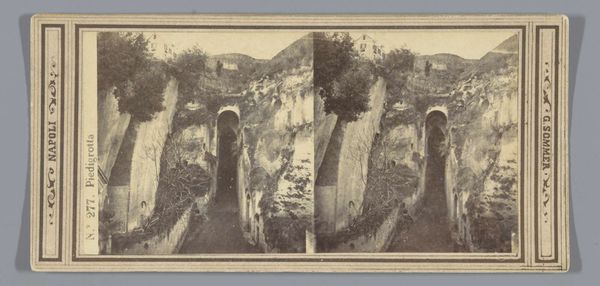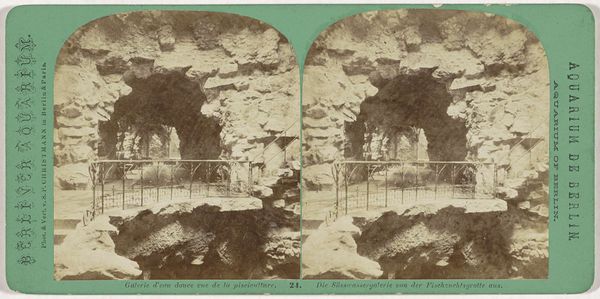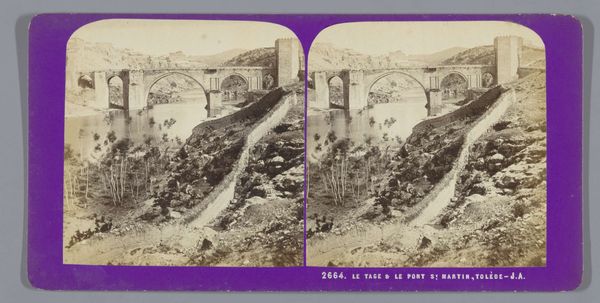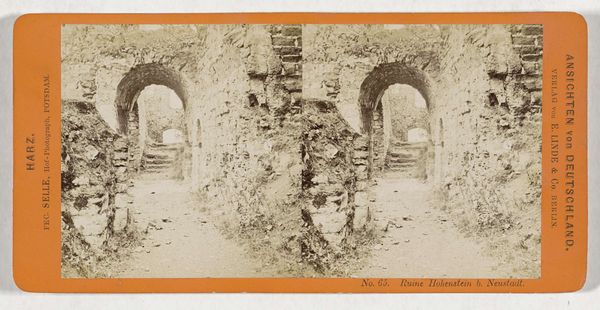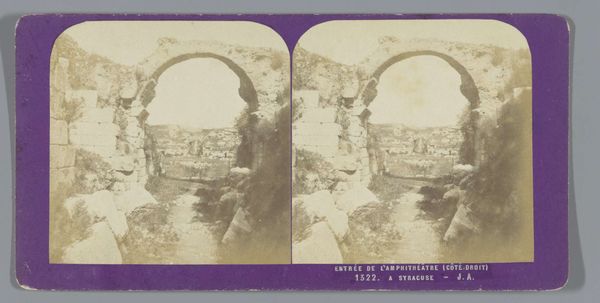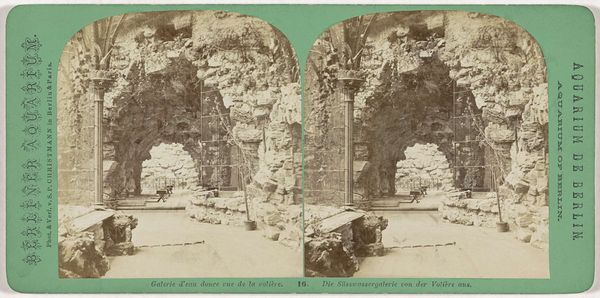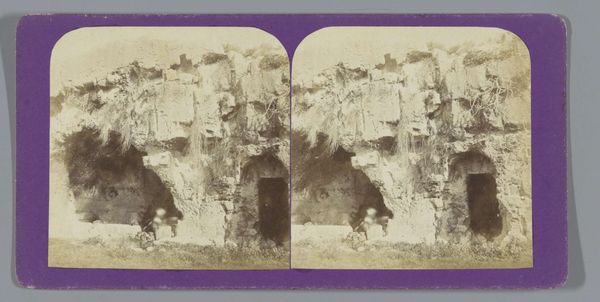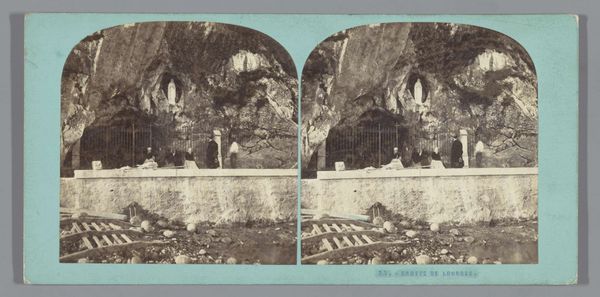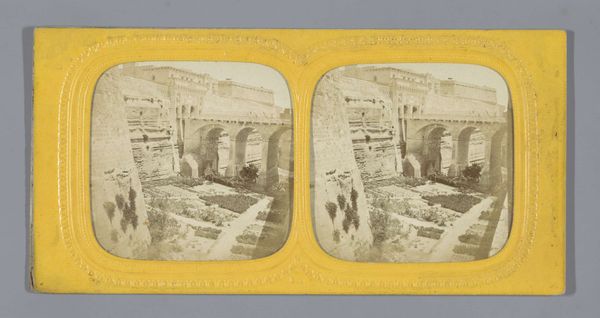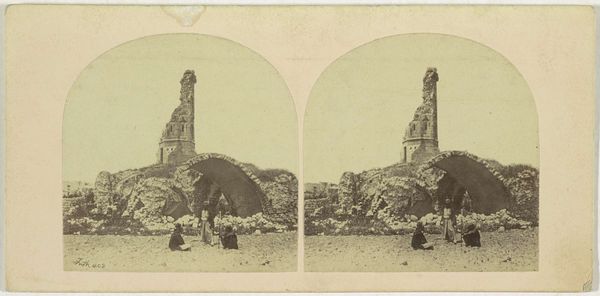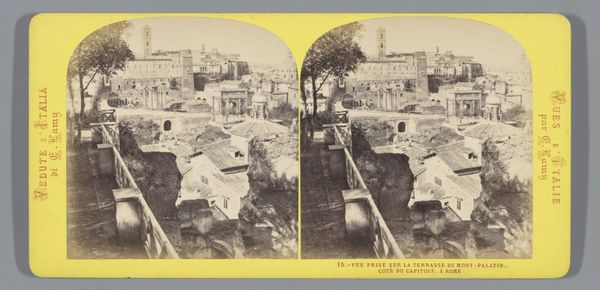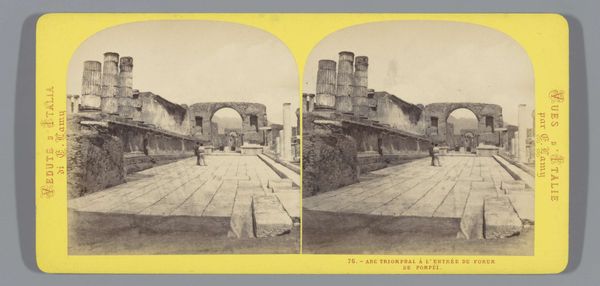
print, photography, collotype
# print
#
landscape
#
photography
#
romanesque
#
collotype
#
cityscape
Dimensions: height 88 mm, width 176 mm
Copyright: Rijks Museum: Open Domain
Curator: This stereoscopic image, “Gezicht op de Tempel van Minerva Medica in Rome,” created sometime between 1872 and 1876, arrests the gaze immediately with its haunting presence. The Roman ruin almost appears to levitate. Editor: Haunting is exactly the right word! The photograph, especially given the collotype medium, is imbued with this uncanny stillness. The Temple appears spectral, rendered in these almost ghostly shades. Curator: Indeed, the albumen print creates a rather ethereal quality. The sharp detail juxtaposed with the faded tonality produces that unique sense of arrested decay that characterized Romanesque aesthetic principles. The very structure looms because it seems to possess the history of its presence within its geometric integrity. Editor: Yes, and given its probable circulation amongst European elites at that time, how fascinating that such images offered access to a "classical" past steeped in, might I say, Romantic ruin. The burgeoning tourism industry helped transform how culture and history became commodified through these prints. What the image represents, then, is a very specific and curated form of historical "consumption," one heavily burdened by class and geographic privilege. Curator: Precisely. It isn’t just about representing form faithfully, but creating an object with its own circulation value; a tangible connection that facilitates ownership of culture. Observe how the line of sight emphasizes perspective; leading the eye, quite literally, "into" the scene itself through geometric harmony and framing devices! Editor: And the ruins become this picturesque stage! They underscore a European self-fashioning. It is about a visual performance for its target audience. How art—here, a "simple" photographic reproduction—played such an important part in shaping how nineteenth-century individuals imagined nationhood through encounters, even second-hand, with classical heritage. Curator: An image, through visual rhetoric, thus has material consequences that resonate historically. What initially seems like a visual study ends up serving cultural forces on a macro scale. Editor: Leaving one with much to think about beyond mere aesthetic contemplation, don’t you agree?
Comments
No comments
Be the first to comment and join the conversation on the ultimate creative platform.
